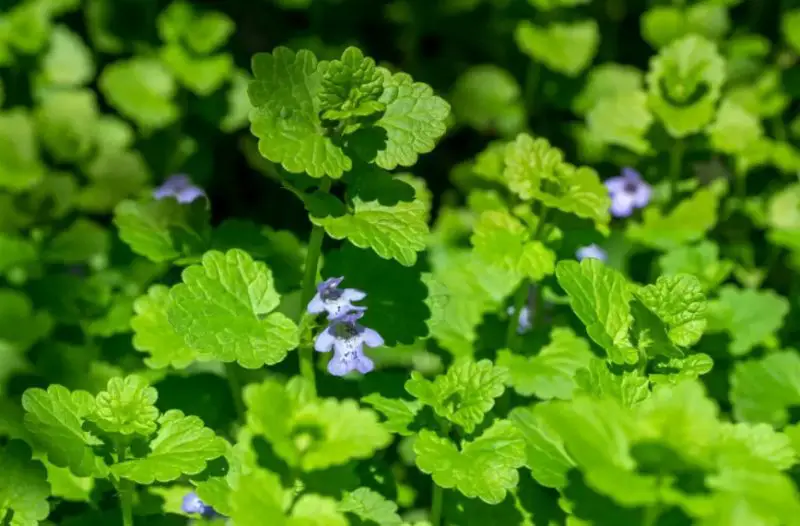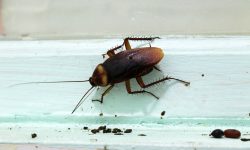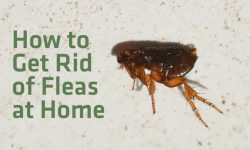Creeping Charlie, also known as Glechoma hederacea or ground ivy, is a notorious weed that can rapidly spread throughout your lawn and garden. This perennial weed thrives in shady, moist areas and can quickly become a headache for homeowners, overtaking flowerbeds, lawns, and other areas by spreading through its seeds, roots, and stems. While its small purple flowers may seem attractive, it is one of the most persistent and invasive lawn weeds.
The good news is that there are several effective methods for eliminating Creeping Charlie. Whether you want to go the natural, chemical-free route or opt for faster solutions, we’ve outlined four effective ways to remove this stubborn weed from your yard.
Hand-Pulling Creeping Charlie

Why Hand-Pulling Works
Hand-pulling is one of the most straightforward methods to get rid of Creeping Charlie. While labor-intensive, it is one of the safest options for the environment and your garden. By manually pulling the plant, you avoid using harmful chemicals that could damage your lawn or the surrounding plants.
Materials Needed:
- Shovel
- Garden gloves
- Large garbage bag
- Garden hose
- Garden shears
Step-by-Step Guide to Hand-Pulling:
- Prepare the Area: Put on garden gloves to avoid allergic reactions. Start by trimming any large vines or stems of Creeping Charlie with garden shears and place the clippings in a garbage bag. Be sure to dispose of the clippings properly to prevent them from taking root elsewhere.
- Water the Ground: Use a garden hose to thoroughly soak the ground around the Creeping Charlie. Saturating the soil will loosen the roots and make it easier to pull the plant.
- Pulling the Weed: Once the soil is soft, grab the plant at its base, close to the ground, and slowly pull it out, ensuring you remove as much of the root system as possible. If you encounter resistance, use a shovel to pry the plant up. The key to successful hand-pulling is removing the roots, as any remaining root fragments can lead to regrowth.
- Dispose and Fill the Hole: Place all parts of the plant in a garbage bag and fill any holes left by the pulled weeds with grass seed or cover the area with mulch to prevent new weeds from sprouting.
Hand-pulling is effective but may need to be repeated several times throughout the growing season, especially for more extensive infestations. This method works best on small patches and can also be used to remove other invasive plants like poison ivy or moss.
Kill Creeping Charlie with Borax
Another organic method to kill Creeping Charlie is by using a solution of borax. Borax contains boron, which, when applied in high concentrations, becomes toxic to Creeping Charlie. However, caution is necessary when using this method, as it can harm other plants and pets.
Materials Needed:
- 10 ounces Borax
- 2 ½ gallons of warm water
- Bucket
- Spray bottle or garden sprayer
Step-by-Step Guide:
- Mix the Solution: In a bucket, mix 10 ounces of Borax with 2 ½ gallons of warm water, stirring until fully dissolved. Ensure you follow the precise measurements, as too much boron can result in toxicity to the soil.
- Spray the Weed: Transfer the solution to a spray bottle or garden sprayer. Target the areas where Creeping Charlie is growing, and spray evenly over the plants. Be cautious to avoid spraying on any desirable plants, as the solution can kill anything it touches.
- Reapply if Needed: Wait for two weeks to see the effects. If necessary, reapply the Borax solution. This method works best in the fall when Creeping Charlie is most active.
Note: Avoid using Borax if you have pets that spend time in the yard, as it can be toxic to animals.
Killing Creeping Charlie with Solarization
Solarization is an effective, natural method for killing Creeping Charlie using the sun’s power. This process involves covering the weeds with plastic to trap heat and smother the plants. Solarization works by depriving the weeds of light, water, and oxygen while simultaneously heating the soil to temperatures that kill the plant.
Materials Needed:
- Clear plastic sheet
- Bricks or rocks
- Garden hose
Step-by-Step Guide:
- Prepare the Area: Start by mowing the area where Creeping Charlie is growing, setting your mower to the lowest possible height. This removes the plant’s foliage and makes the solarization process more effective.
- Cover with Plastic: Lay a clear plastic sheet over the Creeping Charlie patch. Ensure the plastic completely covers the weeds and weighs down the edges with rocks or bricks to keep it secure.
- Let the Sun Work: Leave the plastic in place for several weeks, allowing the sun to heat the area beneath the plastic. Solarization works best during the summer months when temperatures are high, but it can also be effective in the late fall, just after the first frost, to prevent the weed from germinating the following year.
- Remove the Plastic: After several weeks, remove the plastic and inspect the area. The weed should be shriveled and brown. At this point, you can easily dig up the dead plant material and dispose of it.
This method is effective and chemical-free, but keep in mind that it may also kill other plants underneath the plastic, so use it cautiously in areas with desirable plants.
Preventing Creeping Charlie from Coming Back
After removing Creeping Charlie from your yard, prevention is crucial to stop the weed from returning. This can be achieved through proper lawn care and preventive strategies.
Lawn Care Tips:
- Use Corn Gluten Meal: In early spring, before Creeping Charlie starts to sprout, spread corn gluten meal across your lawn. Use around ten pounds of corn gluten per 1,000 square feet of lawn. Water thoroughly after applying but ensure no rain is expected for a few days. Corn gluten works as a natural pre-emergent, preventing the weed from germinating.
- Improve Lawn Health: Creeping Charlie often invades weak or poorly maintained lawns. Ensure your lawn is healthy by mowing regularly, watering sufficiently, and fertilizing when necessary. Grass that is dense and well-cared for is less susceptible to weed infestations.
- Monitor for Regrowth: Keep a close eye on the areas where Creeping Charlie was removed. Any new shoots should be dealt with immediately by hand-pulling or applying a pre-emergent herbicide.
- Consider Shady Alternatives: Creeping Charlie thrives in shady, moist areas. If your lawn has spots where grass struggles to grow due to shade, consider planting shade-tolerant ground covers or ornamental plants to discourage the weed from returning.
Conclusion
Creeping Charlie can be a persistent and frustrating weed to eliminate, but with the right approach, you can regain control of your yard. Whether you opt for the organic hand-pulling method, use Borax as a natural herbicide, apply solarization to suffocate the weed, or combine all three strategies, it’s essential to be diligent in monitoring and maintaining your lawn.
Remember, maintaining a healthy, thick lawn is the best defense against Creeping Charlie and other invasive weeds. Keep your lawn well-watered, mow it to the appropriate height, and regularly check for signs of weed regrowth to prevent Creeping Charlie from taking over again. By following these steps, you’ll keep your yard free from this invasive weed and ensure it remains a lush, green space for you to enjoy.






